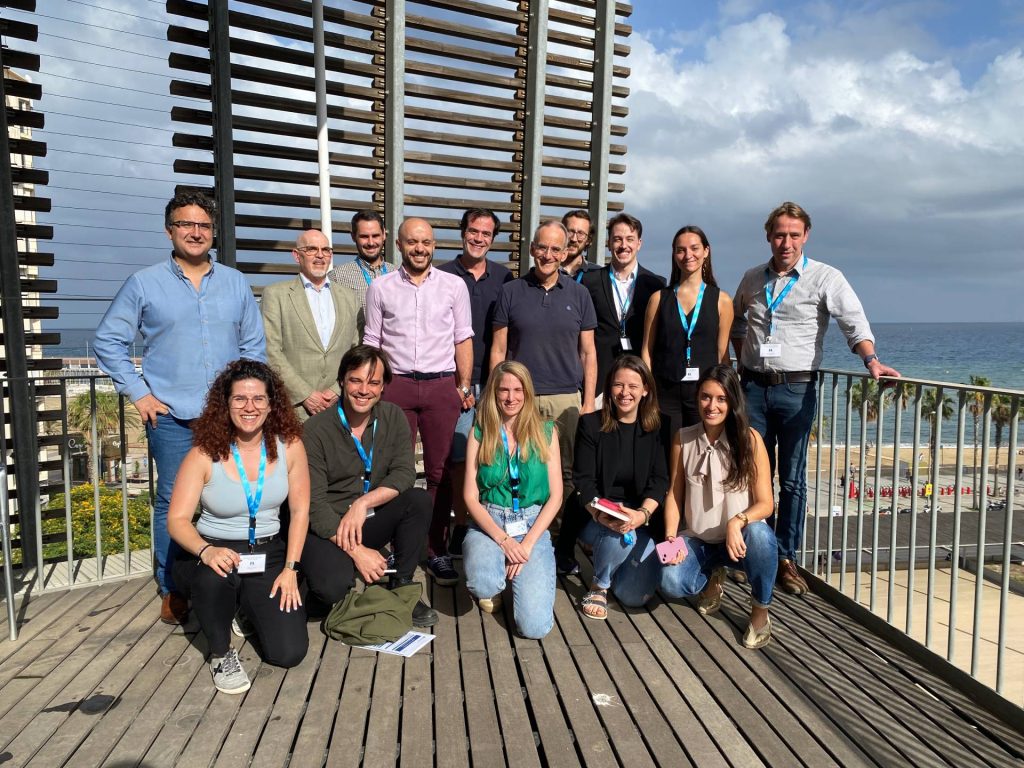The TAONas LUAD Project Hosts Its 2nd Annual Meeting in Barcelona
Barcelona, June 20th, 2024. The TAONas LUAD project, an innovative drug development effort funded by the European Union’s HORIZON 2020 EIC Transition program, held a productive and inspiring 2nd General Assembly. They recapped the progress of the past year and made important decisions about the next exciting steps for the research into alternative splicing-modifying antisense oligonucleotide treatments for lung adenocarcinoma.
Comprising 4 organizations from 3 different countries, the TAONas LUAD project is working diligently to develop a new treatment for lung cancers with high expression of a proliferative splice variant of the NUMB gene. Aligning with the EU’s long-term goals for novel, improved cancer treatments and European biotech excellence, the team is looking towards the future and hoping to make a big impact.
Key Highlights from the Assembly’s Agenda
The Annual Meeting consisted of one marathon day, intending to facilitate comprehensive discussions on each of the project’s Work Packages. The morning session featured a quick update by project coordinator Dr. Juan Valcarcel’s on the state of project development and a deep discussion with scientific advisory board members, Dr. Adrian Krainer and Dr. Roy van der Meel. This was followed by Maria Guerrero’s presentation on the more detailed results of the lead compound optimization process and the various in vitro and in vivo experiments ongoing at the CRG. Following this, Dr. Jérémie Parot from SINTEF presented the latest updates regarding formulation of the antisense oligonucleotides. Next, Dr Antonio Maraver presented efficacy results obtained at INSERM, followed by an engaging discussion on upcoming in vivo experiments. The second half of the meeting focused around business development endeavors, with Dr Gerardo Marchesini, CRG’s Entrepreneur in Residence, explaining CRG’s timeline for spinoff creation and Dr. Petrus Stienen from the CRG’s Technology & Business Development Office summarizing the current IP status of the project. Next, Mireia Lozano from Asphalion laid out the next moves from a regulatory standpoint and fielded important questions from the scientific team. From Inveniam, Silvia Perez presented the results of the ongoing Health Economics Analysis, which sparked a lively discussion about pricing strategy, pitching to investors and seeking approval from the EMA and FDA based on cost effectiveness. Dr. José Luis Cabero then gave insightful feedback as a biotech consultant with extensive industry experience, and challenged the team to focus on defining the Target Product Profile (TPP) of the AONs focusing on establishing efficacy milestones. Afterwards, Alba Andrés discussed communication and dissemination with the team as well as coordination of the next reporting requirements to the project coordinator at the EIC, leaving time for Dr Valcárcel to wrap up the session with some closing remarks.
Conclusion
Our Scientific Advisory Board, Dr. Adrian Krainer and Dr. Roy Van der Meel, provided invaluable recommendations to enhance the project’s progress. They emphasized the importance of setting clear thresholds and suggested implementing a go/no-go mechanism for each experiment. As we move forward the development process, they also recommended conducting stability assays to monitor our products’ consistency and establishing quality control processes. These insights will significantly guide our next steps and concentrate our development efforts.
The 2nd Annual Meeting set a significant milestone in our collective journey towards AON technology development and the creation of the spinoff company envisioned by the project, as the scientific and business development teams set the stage for these pivotal events in the project’s lifespan.
We extend our sincere thanks to all the partners whose contributions have been instrumental, namely CRG, SINTEF, INSERM, Inveniam, Asphalion and to our stellar scientific and business advisors. Their knowledge and motivation are the driving forces that continue to bring our antisense oligonucleotide treatment closer to improving the lives of lung cancer patients.

